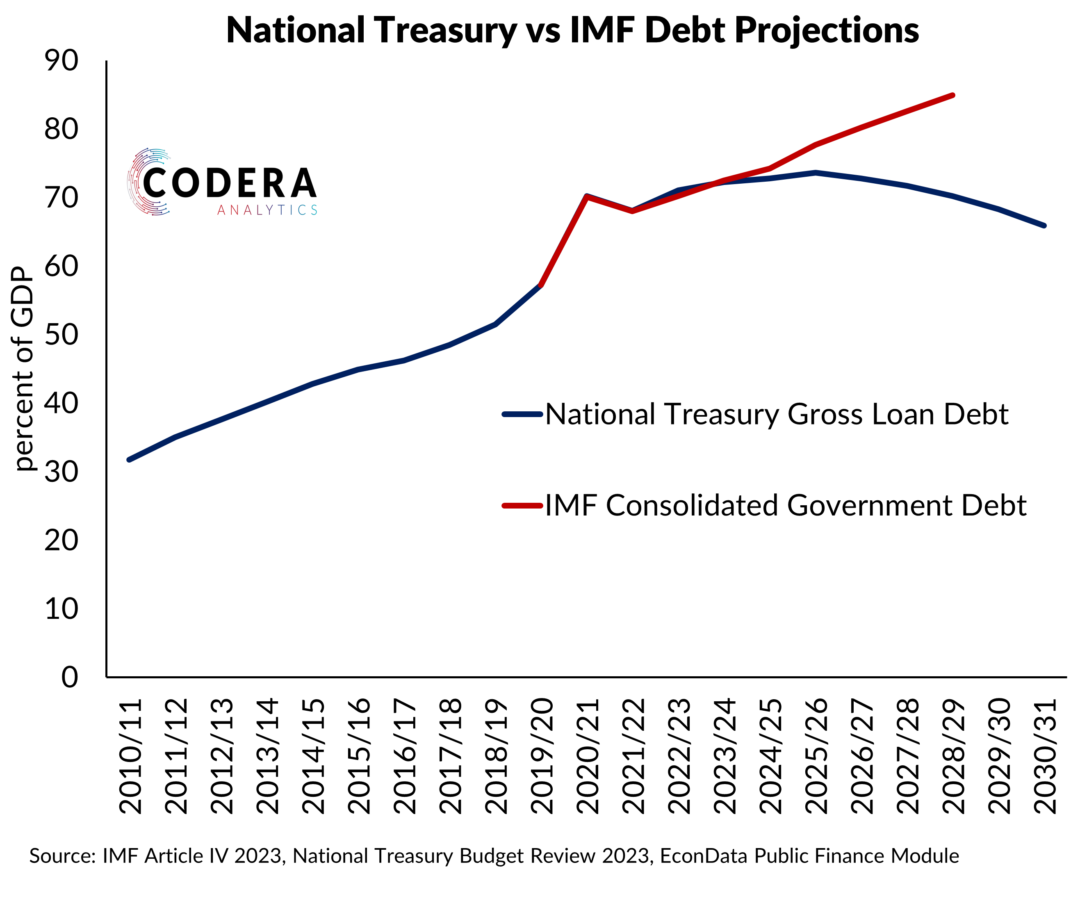This blog post looks at long-term fiscal data for South Africa, the US, UK, Australia, Canada and New Zealand.
South African public debt is at its highest level since 1932, although a global low interest rate environment meant that debt service costs have been lower than in the late 1990s or early 1930s. Debt started to rise following the global financial crisis of 2008/9 and picked up further following the onset of the COVID-19 pandemic in 2020. A simple heuristic often used to think about the outlook for public debt is the difference between the cost of borrowing and the rate of economic growth since government debt tends to rise when borrowing costs (r) are higher than economic growth (g). To illustrate this, I have plotted the difference between simple proxies of r and g for South Africa. The difference between r and g follows the same profile as public debt, with fiscal policy having tended to switch to a consolidation stance when interest rates have exceeded economic growth.

This has not been the case for many advanced and emerging market economies over recent years. In all of the advanced economies considered in the charts below, the difference between interest rates on public debt and economic growth has been either low or negative over recent years, again reflecting low interest rates by historical standards. Public debt, on the other hand, rose in all of the considered countries following the global financial crisis.





These negative interest rate-growth differentials have led to an intense debate over whether borrowing in these economies carry low or even zero fiscal cost. Now that interest rates have risen from their historical lows, one would expect the historical association between r vs g and public debt to begin re-asserting itself once more in many economies.

